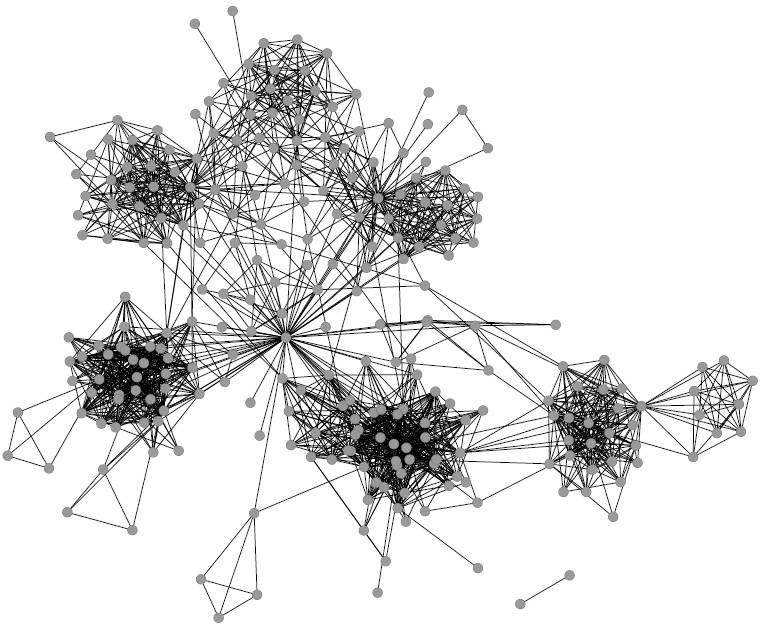So here are 3 models which get around the “we just need to involve more people” mantra.
Model 1 – grow the pie: There is some very good stuff like Genius York, Monmouthshire meetings, Leeds citizen forum and countless others who are attempting to get people involved who wouldn’t otherwise be involved. Fair enough, some are done well, some aren’t. But at least they show willing. Armchair enthusiasts, big data, twitter and sharing – more of this please. I’d also like some stats on this beyond community life surveys about participation rates, and national volunteering rates (which I’ve already written will be fairly healthy for a few years to come). But does it address fundamental issues of social justice (as suggested by the RSA blogs this may be a land grab for the word community: www.rsablogs.org.uk/2014/social-economy/remembering-pete-seeger-community-radical-concept). It might get more efficient in filling in potholes it doesn’t radically change anything.
 Model 2 – magic bullets: This can things like social prescribing, some big RCTs, payment by results etc) and there’s a crossover with creative Councils and other things, but this is STILL WORKING WITH NEW PEOPLE in the main. Some of these will move over from the private sector, some with be business minded social tech-entrepreneurs. Part of this suggest that failure demand, and partly an allegation against people ‘whose livelihoods depend on them not understanding’. Hence a massive growth in charities and no data to suggest a reduction in social issues to show for it.
Model 2 – magic bullets: This can things like social prescribing, some big RCTs, payment by results etc) and there’s a crossover with creative Councils and other things, but this is STILL WORKING WITH NEW PEOPLE in the main. Some of these will move over from the private sector, some with be business minded social tech-entrepreneurs. Part of this suggest that failure demand, and partly an allegation against people ‘whose livelihoods depend on them not understanding’. Hence a massive growth in charities and no data to suggest a reduction in social issues to show for it.
Model 3 – use the pie differently: This is working with new and existing in the social sector. I call this Community Aggregation (as opposed to Aggravation) and it owes a lot to things like David Wilcox’s thoughts http://socialreporter.com, and Julian Dobson’s National Grid of Community Infrastructure http://livingwithrats.blogspot.co.uk/2011/04/national-grid-for-community.html#!/2011/04/national-grid-for-community.html The aim is “to maximise the intentions that exist (almost everywhere if we believe the social attitudes surveys) and turn this desire into something useful”. I sometimes explain that I am interested in the architecture in how things happen because everything is driven by an individual who initially is not getting paid (if you want to cheapen this experience of discovery, call them a volunteer). I think this will be the driving force for the next couple of decades (and not just rampant individualism and consumerism extended into later life). I think we are genuinely finding a new way of living together, not arguing over the spoils of a decade of government interventions.
So we use aggregation. Start with what’s there and maximise it. Maybe use the Law of Marginal Gains from the Sky racing team (aka – does it make the boat go faster? www.teamsky.com/article/0,27290,17547_5792058,00.html). Voluntary Actions are ideally placed to do this, with a rebrand but often don’t have the skills or money to make it happen. In many places NHS or Las are setting up things very similar to CVSs which run on volunteers and aim to “bring the community together”.

 So it needs a communication strategy for a city as well (community nodes model on the left). These new organisation may at a later date be floated off when they realise it’s not easy or cheap to do and then they tender them out like they’ve done in many places over the last 24 months bringing competition and driving the things people do aside from delivering contracts which often make up the most important things they do. Hence grants. It’s not sexy to say it, but grants are often still the cheapest way of getting what you want.
So it needs a communication strategy for a city as well (community nodes model on the left). These new organisation may at a later date be floated off when they realise it’s not easy or cheap to do and then they tender them out like they’ve done in many places over the last 24 months bringing competition and driving the things people do aside from delivering contracts which often make up the most important things they do. Hence grants. It’s not sexy to say it, but grants are often still the cheapest way of getting what you want.
Start with what exists, offer help from a variety of sources (asking for volunteers through www.do-it.org.uk is hugely depressing, and we’re still waiting for something like skill-will to broker resources on businesses. While I’m here have a look at: http://training4good.org/about looking to fill spare training courses with people who might need them – a great example of maximising assets.
So maybe we end up with something like this for a city..?
(There is in fact a Model 3b – just put more money in. It’s always an option, particularly the increasing north south divide. All the ideas I’m suggesting won’t replace the fact that money is pouring out of many towns and cities and its showing.)
Casey
(There is in fact a Model 3b – just put more money in. It’s always an option, particularly the increasing north south divide. All the ideas I’m suggesting won’t replace the fact that money is pouring out of many towns and cities and its showing.)
Casey
